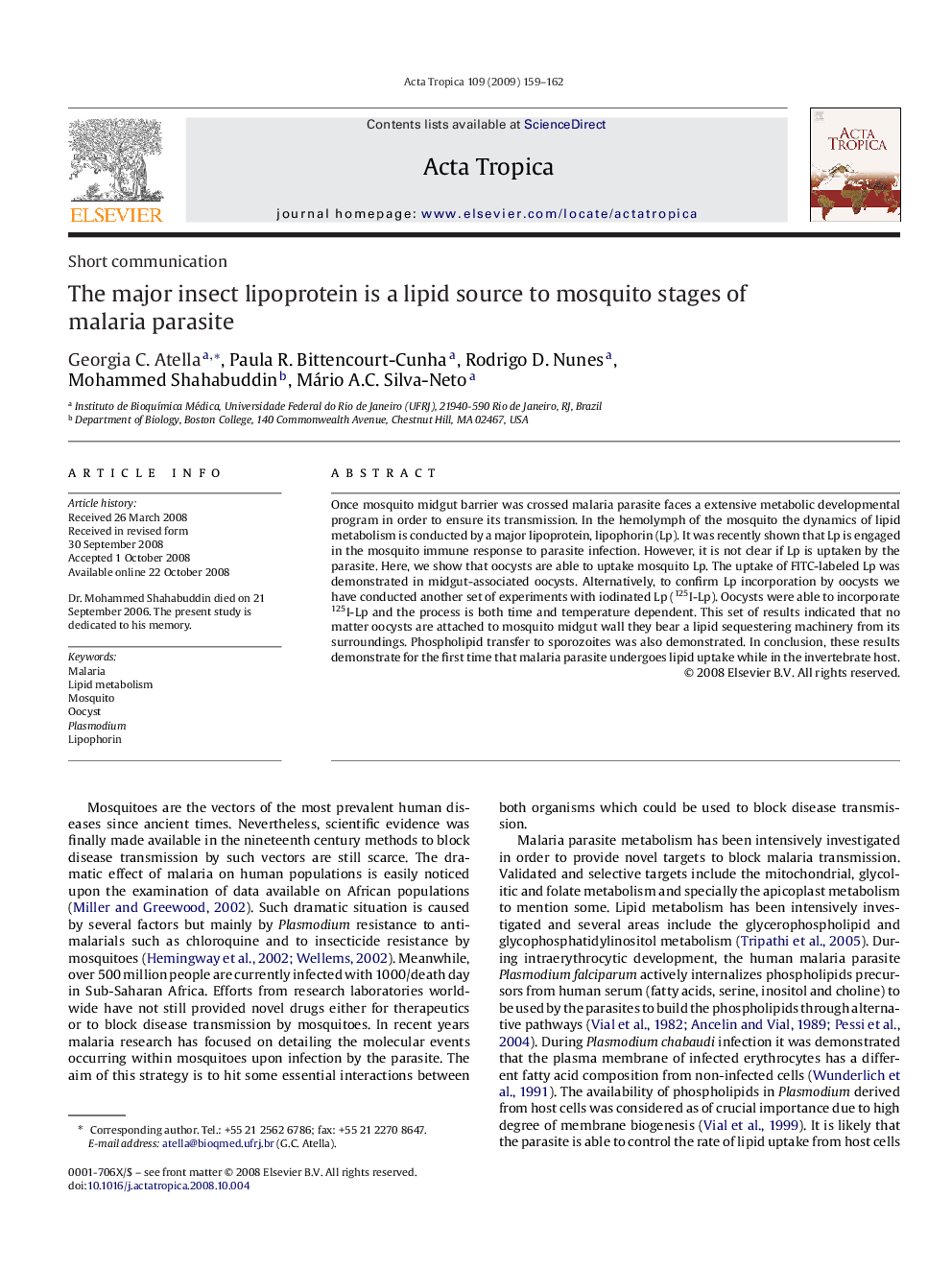| Article ID | Journal | Published Year | Pages | File Type |
|---|---|---|---|---|
| 3394401 | Acta Tropica | 2009 | 4 Pages |
Once mosquito midgut barrier was crossed malaria parasite faces a extensive metabolic developmental program in order to ensure its transmission. In the hemolymph of the mosquito the dynamics of lipid metabolism is conducted by a major lipoprotein, lipophorin (Lp). It was recently shown that Lp is engaged in the mosquito immune response to parasite infection. However, it is not clear if Lp is uptaken by the parasite. Here, we show that oocysts are able to uptake mosquito Lp. The uptake of FITC-labeled Lp was demonstrated in midgut-associated oocysts. Alternatively, to confirm Lp incorporation by oocysts we have conducted another set of experiments with iodinated Lp (125I-Lp). Oocysts were able to incorporate 125I-Lp and the process is both time and temperature dependent. This set of results indicated that no matter oocysts are attached to mosquito midgut wall they bear a lipid sequestering machinery from its surroundings. Phospholipid transfer to sporozoites was also demonstrated. In conclusion, these results demonstrate for the first time that malaria parasite undergoes lipid uptake while in the invertebrate host.
